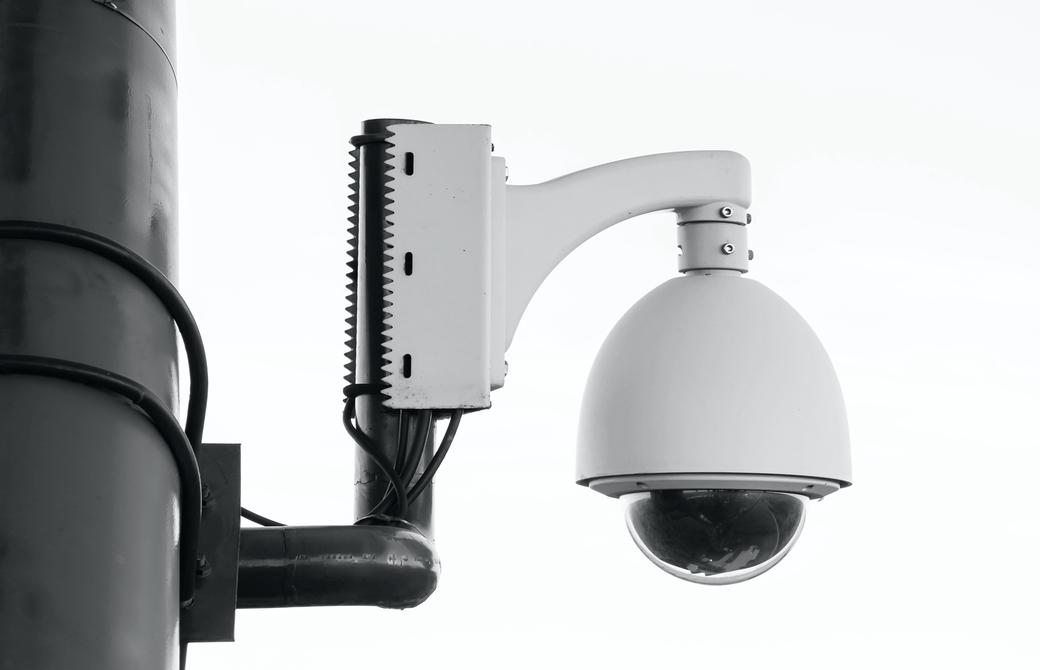Table of Contents
If you’re working with Kubernetes at a high level, then you know the importance of securing your Kubernetes cluster. The security of your Kubernetes applications and services should be taken seriously to protect user data and mitigate any potential risks.
In this blog post, we’ll outline the top eight best practices for securing your Kubernetes cluster. We’ll first discuss the steps for securing Kubernetes on a broad scale. Then, we’ll cover more specific best practices for ensuring the security of your cluster. We’ll also look at some common issues seen in Kubernetes security and how to identify and correct them.
By following these Kubernetes security best practices, you can ensure that your Kubernetes cluster is properly protected against potential threats. So, let’s get started!
#Steps to Secure Kubernetes
Securing Kubernetes requires an understanding of the environment, continuous attention, and proactive monitoring. Before implementing any of the best practices, you should take a few steps to secure Kubernetes on a broad scale.
First and foremost, you must have control over your environment. That includes controlling who has access to the Kubernetes nodes and who can access the services running in them. You can do this through user authentication and role-based access control (RBAC). Setting up authentication is essential for ensuring that only users with certain privileges are allowed to access certain elements. RBAC helps you control who can do what within the system by assigning roles based on user groups or individuals.
The second step is to harden your environment by tightening security settings and policies. This includes disabling unnecessary services, configuring logging, managing ports, upgrading services regularly, and configuring firewalls appropriately. Adopting all these practices will strengthen Kubernetes security and reduce potential risks in the system.
Finally, it’s important to stay up-to-date with security patches and updates. Running the most current software versions keeps your system safe from new threats to Kubernetes components.
#Common Kubernetes Security Issues: How to Identify & Correct Them
Kubernetes is an open-source system for managing containerized applications and services. While it provides many advantages, it also comes with some potential security issues that administrators should be aware of. Here are some common security issues and how to identify and correct them.
First, out-of-date images can be a major security concern. To identify out-of-date images, look for hashes in the Docker images being used and check if they match the known good versions of those images. If they don’t match, you should update the image to avoid potential compromise.
Another issue is misconfigured access control lists (ACLs). ACLs are used to restrict or grant access to resources in Kubernetes. To ensure these are configured correctly, use RBAC for authorization and regularly review the roles associated with your Kubernetes nodes.
Finally, users must be careful when using secrets within their applications so that they remain secure at all times. To do this, users should utilize encryption techniques when storing secrets in Kubernetes clusters. They should also use an external secret management system, such as HashiCorp Vault or AWS Secrets Manager when needed.
#Top 8 Kubernetes Best Practices
#1. Restrict Network Access
As a Kubernetes operator, you want to ensure that only the necessary systems and services can access the cluster. To ensure this, it’s important to restrict network access to limit how many systems or users can access the cluster.
First, you should identify what systems or users need access to your Kubernetes cluster and set up appropriate authentication for them. This could include a third-party identity provider like Auth0 or Active Directory, or it could mean setting up service accounts for each system that needs access.
Once you’ve established which systems need access, the next step is to configure an appropriate network security policy. This should include setting up firewalls and other infrastructure monitoring tools to detect suspicious activity and block malicious actors from accessing your system.
It’s also important to set up authentication protocols like OAuth 2.0 so that only authenticated requests can be made on the network. Additionally, you should set up encryption protocols such as TLS/SSL so that all communication is securely encrypted over the wire.
These steps will help you keep your Kubernetes environment secure and allow only authorized users the access they need while preventing malicious actors from gaining access to your system.
Kubernetes Network Policies: A Practitioner’s Guide. Explore why and how network policies are used within a Kubernetes cluster. Allowing only the required traffic is a security best practice, and Kubernetes allows us to implement this via declarative configuration of network policies. Since network policies depend heavily on the labels of pods/namespaces, it is straightforward to deploy rules that would also capture newly created resources.
#2. Use Role-Based Access Control (RBAC)
RBAC is one of the most important Kubernetes security best practices. RBAC is a built-in feature of the Kubernetes API server and provides a way to control user access to various resources within a cluster. It allows you to define roles, assign users or Service Accounts to those roles, and grant them permission to take certain actions on specific resources.
When configured properly, RBAC can:
- Help prevent users from accessing resources that they don’t need access to
- Allow administrators to granularly manage access for different teams
- Ensure that users are only able to take the actions allowed by their role
- Make it easier to audit user permissions
RBAC helps you secure your cluster by making it easier for you to grant only the bare minimum level of access necessary while still allowing users and services the ability to do their job. To help ensure proper security in your cluster, make sure that you’re using RBAC and that you’re regularly reviewing existing roles and access levels.
Kubernetes RBAC: Basics and Advanced Patterns. In this article, you’ll learn the basics of RBAC, how it works, and how it can be implemented within a Kubernetes cluster.
#3. Protect Persistent Volume Claims
In Kubernetes, Persistent Volume Claims (PVCs) are objects that allow a user to claim a specific volume for their application. They’re used to store persistent data and should be given special attention when it comes to security. To ensure the protection of your PVCs, follow these best practices:
- Use network policies to limit access to only authorized users/services.
- Use network segmentation to avoid exposing PVCs to unnecessary traffic.
- Ensure that all operators have authorization before they can access any PVCs or make changes.
- Create a separate access policy for each user or group of users who need access to the PVCs.
- Utilize encryption at rest and in transit for all PVCs.
- Monitor storage usage and alert when there’s an abnormal increase or decrease in storage size.
- Deploy only verified images and signed binaries on your Kubernetes cluster.
- Continuously monitor your application’s logs for suspicious activity, such as unexpected data read/write operations, etc.
- Regularly audit your applications for security misconfigurations or vulnerabilities.
- Perform regular backups of all your Kubernetes resources.
By following these steps, you can ensure the security of your PVCs and maintain control over who has access to them at any given time.
#4. Monitor the Cluster
By tracking changes to your cluster and system resources, you can detect any potential malicious activity quickly and take immediate action.
Monitor the following activities:
- Resource usage of the nodes
- Pod scheduling and utilization
- Network traffic between pods and other external entities
- Logs from hosts, containers, the API server, etc.
- Security events such as account logins, firewall changes, etc.
These performance metrics, combined with Service Level Indicators (SLIs), will provide baseline data for comparison when looking for anomalies or vulnerabilities. Additionally, suppose you detect any suspicious or malicious activity. In that case, these SLIs can also help identify which container or pod was responsible so that it can be isolated and further investigated.
#5. Deploy Tools to Catch Misconfigurations
Kubernetes has a lot of levers and knobs that require careful attention, and it’s easy for errors to slip through the cracks. Fortunately, there are some great open-source tools that you can use to identify problems before they become major security risks.
Two popular choices are Open Policy Agent (OPA) and Prometheus. Both of these tools can be used to regularly scan your cluster for misconfigurations and alert you if something isn’t set up correctly. These alerts allow you to adjust the cluster before hackers find a way in. Both tools have detailed setup documentation, so be sure to familiarize yourself with them before diving in.
Finally, deploy these tools regularly to quickly identify any new issues. This is especially important if you make frequent changes or add new services. The longer an issue goes unnoticed, the more time hackers have to exploit it.
#6. Keep Your Cluster Patched & Up to Date
Keeping your cluster patched and up to date is essential in maintaining Kubernetes security. With every new version, Kubernetes gets more secure and offers more features to help you proactively protect your cluster.
To ensure your installation is up to date, you should:
- Check for updates at least once a week. Check daily if possible.
- Update the components inside your clusters (such as the NodeOS, Cluster OS, or Container Engine) and any other services that are monitored within the cluster itself (such as Helm, Istio, etc.).
- Utilize automated patching if available.
- Verify that nodes have applied the patch when it’s been released to ensure that nothing has been missed or skipped over.
- Monitor for any suspicious activity or unauthorized changes within the cluster.
In addition to keeping your cluster up to date and patched, it’s important to identify common issues and how to correct them. Common issues include weak authentication protocols, unpatched nodes, insecure network segmentation, poorly configured services, and unused containers with root access privileges. To identify these issues and correct them, complete the following steps:
- Perform regular vulnerability scans on all of your nodes.
- Use logging and metrics aggregators (like Prometheus) to monitor for any suspicious activities across the entire cluster.
- Segment off parts of your network that shouldn’t communicate with each other (such as untrusted user pods vs. system pods).
- Configure each service with secure settings (i.e., role-based access control).
- Delete any containers that are no longer in use.

#7. Implement Security Policies
Implementing security policies across your Kubernetes environment allows you to promptly identify and address security issues. Security policies are predetermined rules that specify the conditions under which access to particular resources will be granted or denied.
Security policies can include specifying who can access what resources and when, what type of data can be accessed and shared, and how user access rights should be configured. When utilized properly, security policies help ensure that only legitimate users with the appropriate credentials can access sensitive information or resources.
Security policies should also be regularly reviewed to ensure they’re up to date with best practices and environment changes. Additionally, following industry standards such as CNCF’s Kubernetes benchmark can help ensure your policies are aligned with industry standards for optimal security.
#8. Create a Backup Plan
If a disaster were to occur and you had no backup, you’d have no way to restore your cluster and services to the most recent state.
To back up your Kubernetes cluster effectively, consider using an automated solution like Kubesnap. This tool automates the process of taking snapshots of critical components in your environment, like pod definitions, replica sets, and services. These snapshots allow you to quickly restore any resources that may be impacted during an incident.
Additionally, when backing up your resources, remember that you can set permissions for each snapshot so that users can only access the data they need when it comes time to restore the cluster. Setting these permissions can help protect sensitive information from malicious actors who may try to access your system during or after an attack.
Finally, as part of your backup plan, it’s a good idea to regularly test backups so you know they’ll be viable in case of an incident. Testing your backups routinely can help prepare you for any eventuality and minimize downtime when disaster strikes.
#Conclusion
Kubernetes is a powerful, complex system with many capabilities and settings that could put your environment at risk if not correctly implemented and maintained. We’ve provided eight Kubernetes best practices that will help ensure your Kubernetes environments are secure.
Taking the time to understand and implement these best practices will make a substantial difference in the security of your deployments. To stay ahead of security issues and vulnerabilities, it’s important to stay up to date with industry news, assess the security of your environment regularly, and employ the right tools to help identify and address security threats. By adhering to these best practices, you can maximize the security of your Kubernetes environment.
This post was written by Jethro Magaji. Jethro is a frontend engineer who’s passionate about the tech world and uses creative thinking to solve business problems with a user-centered approach.










